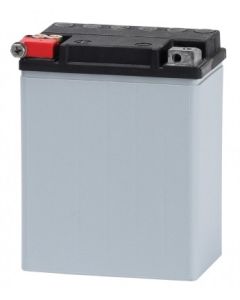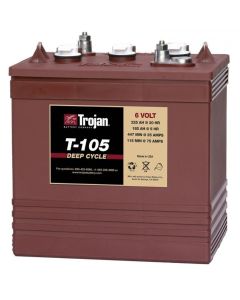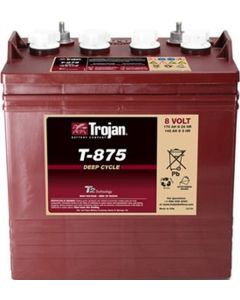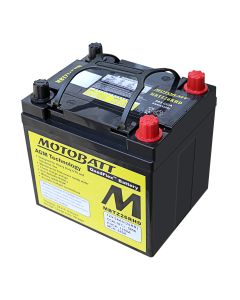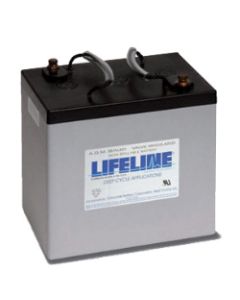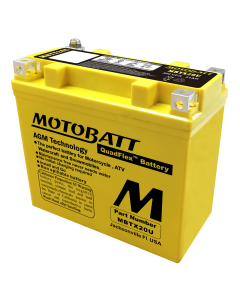UTV Battery
Batteries for
-
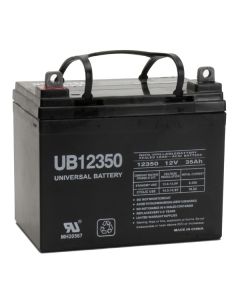 UB12350 Battery - Group U1 12V 35Ah Replacement EP-SLA12-35LSpecial Price $88.95 Regular Price $105.95
UB12350 Battery - Group U1 12V 35Ah Replacement EP-SLA12-35LSpecial Price $88.95 Regular Price $105.95 -
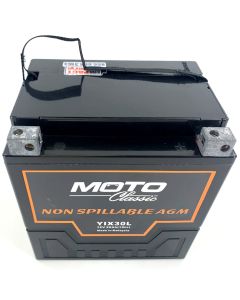 YIX30L MotoClassic Sealed AGM BatterySpecial Price $136.95 Regular Price $169.95
YIX30L MotoClassic Sealed AGM BatterySpecial Price $136.95 Regular Price $169.95 -
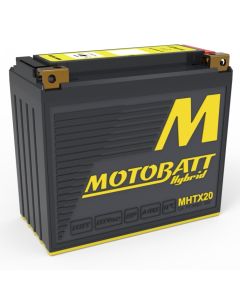
-
 MotoBatt MBU1-35 Sealed AGM Power Sport & Tractor BatterySpecial Price $149.99 Regular Price $155.93
MotoBatt MBU1-35 Sealed AGM Power Sport & Tractor BatterySpecial Price $149.99 Regular Price $155.93 -
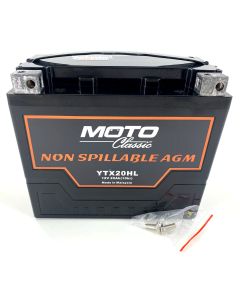 MotoClassic YTX20HL Sealed AGM BatterySpecial Price $92.95 Regular Price $115.95
MotoClassic YTX20HL Sealed AGM BatterySpecial Price $92.95 Regular Price $115.95 -
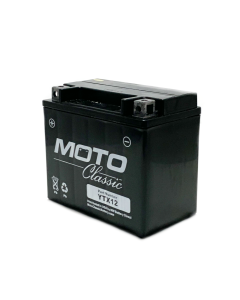 MotoClassic YTX12 Sealed AGM BatterySpecial Price $62.95 Regular Price $78.95
MotoClassic YTX12 Sealed AGM BatterySpecial Price $62.95 Regular Price $78.95
UTV batteries are used to power cold starts, GPS units, and other heavy-duty tools. Picking the wrong battery type can lead to rapid drain or even battery failure. Before you buy a replacement battery, take 2 minutes to understand what your battery needs the most. Here's what you need to know:
Know Your UTV Battery Type
Different UTVs use different types of batteries, and picking the wrong one can lead to weak starts or poor performance. UTVs need strong, reliable power built for how you ride. Here are the most common battery types used in UTVs and what each is made for:
AGM Batteries (Absorbent Glass Mat)
AGM batteries are the most popular choice for most UTV riders. They’re sealed, so there’s no leakage or maintenance required. They can handle rough trails, cold mornings, and power-hungry add-ons like winches or light bars. If you want something challenging and easy to install, AGM is the safest battery you can choose.
Lithium Batteries
Lithium batteries are powerful and last longer than other types of batteries. They charge fast and don’t lose power sitting around. They’re perfect if you’ve got a performance build or want top-tier battery life. Just make sure your UTV’s charging system can handle lithium before switching over.
Flooded Lead Acid Batteries
These are the old-school types that require some upkeep. They work fine for basic riding, but you’ll have to check the fluid levels. They’re usually cheaper, but they don’t last as long, and they tend to dislike rough rides and bad weather.
Check the Battery Compatibility
Before buying a UTV battery, make sure it fits your vehicle’s size and power system. Different UTVs have different battery sizes and layouts, and choosing the wrong one can lead to installation issues. Here’s what you need to check before making your purchase:
Battery Group Size
This is the physical size and shape of your battery. It affects how the battery sits in the tray and how it connects. Standard UTV group sizes include YTX14, YTX20, and Group 26.
If you choose the wrong size, the battery might be too tall, too short, or too wide for your UTV. It can cause fitment issues or make it shake loose during a ride. Always match the group size to your original battery for a proper fit.
Terminal Position
Terminals are where your cables connect, and their position matters. Some batteries have top-mounted terminals, while others have side-mounted terminals. They can also be on the left or right side of the battery.
If your cables don’t reach or line up correctly, you won’t get a safe or reliable connection. Always check the terminal layout of your old battery before purchasing a new one.
Polarity Matching
Polarity means which side the positive (+) and negative (–) terminals are on. If you accidentally install a battery with reversed polarity, it can damage your wiring or blow a fuse. That’s a costly mistake. Make sure the positive and negative terminals on your new battery match the exact position of your old one.
12-Volt System Compatibility
Nearly all UTVs use 12-volt batteries. It’s the standard for cranking the engine and powering accessories like lights, winches, and GPS units. Using a battery with the wrong voltage can damage your electrical system. Unless your owner’s manual says otherwise, always go with a 12-volt battery.
Match CCA and Capacity to Your Use
Not all UTV batteries deliver the same level of power. Some are built for light weekend rides, while others are made to handle cold starts. If you want a battery that lasts and keeps up with your setup, you need to understand two things: Cold Cranking Amps (CCA) and Amp-Hour (Ah) capacity.
Cold Cranking Amps (CCA) tell you how much power the battery can deliver to start your engine in cold weather. The higher the CCA, the stronger the starting power, which is especially important when riding in winter. If the CCA is too low, your UTV may struggle to start when needed.
Amp-Hour (Ah) capacity shows how long a battery can run your gear before it needs to be recharged. If you use lights, speakers, or other gear while riding, go for a higher Ah rating so your battery doesn’t drain too quickly.
Here’s a quick guide to help you match the right power to how you ride:
Light-duty riding (warm weather, no extras): Go for at least 220 CCA
Standard trail use or colder climates: Look for 300 CCA or higher
Heavy setups with winches, heaters, or lights: You’ll need a high CCA and a strong Ah rating
Getting the right power helps your UTV start easily and run strong all day. Pick a battery that matches your real-world use, and you won’t be left stuck on the trail.
Best UTV Battery Replacements
The best UTV battery for your ride is the one that fits your vehicle and your needs. Some people look for raw cranking power, while others want a long-lasting energy-type battery. Here are the types of batteries and which one works best based on how you ride.
AGM batteries are the top choice for riders who want power they can count on. If you’re running winches, plows, lights, or hauling gear through rough trails, this battery type is made for that kind of job. It’s sealed and spill-proof, which means it won’t leak or fail.
Even when your UTV takes a beating over rocks, mud, or cold starts on winter mornings, here are the top 3 AGM batteries you can choose for your off-road trail machine:
Top-rated AGM Batteries for UTV:
Flooded batteries are the most basic and budget-friendly battery. They still get the job done if you ride light and keep things simple. These are a solid pick if you use your UTV for basic tasks like hauling light loads, yard work, or short weekend rides. But don’t use them for extra gear-pulling power.
They cost less upfront, which is great if you’re on a budget or only ride now and then. However, they do require some maintenance, such as checking fluid levels and keeping the terminals clean. Here are the top 3 picks of Flooded batteries for UTVS:
Best Flooded UTV Batteries:
If you’re the kind of rider who’s all about speed and strength- this is your battery. Hybrid and lithium batteries are built for high performance. They crank harder and last longer than the others.
That means quicker starts, faster charging, and longer run times for all the extras you’ve. For example, power-hungry add-ons like lights, stereos, GPS units, or heaters.
These batteries are ideal for custom builds, racing setups, or anyone who enjoys riding. They also hold their charge better in storage, so if you don’t ride every day. Here are the top 3 Hybrid lithium batteries for your choice:
Best Hybrid Lithium-AGM UTV Batteries
Why Choose Our UTV Batteries?
When it comes to replacing your UTV battery, you want something that fits perfectly and can handle a long ride. Here’s why our battery stands out on every trail:
Free shipping on most UTV and ATV batteries
OEM-compatible replacements that fit like factory originals
Vibration-resistant designs built for rough trails and harsh conditions
Trusted by riders since 2013 with top-rated customer support
Fast shipping so you can get back to riding
Maintenance and Charging Tips for UTV Batteries
Your battery might be built tough, but it still needs a little care to last. A few quick habits can help prevent early failure and keep your UTV running smoothly, season after season. Here’s what every rider should do:
Clean the battery terminals regularly to prevent corrosion and ensure solid power flow. A quick wipe or brush can make a big difference.
Don’t let the battery drain completely. Deep discharges can damage the cells and shorten battery life.
If you’re storing your UTV, disconnect the battery and keep it in a cool, dry place. Use a maintainer to keep it charged.
Always charge with the right charger. AGM and lithium batteries have different needs, and the wrong charger can do more harm than good.
Frequently Asked Questions
The UTV battery is a crucial component that ensures your vehicle runs smoothly. However, choosing the right battery can be confusing with so many sizes and types. Here are some common questions UTV riders face, along with their answers.
What size battery is in a UTV?
The size of the battery in a UTV depends on the specific model of the UTV. Some use YTX14 or YTX20 sizes, and Polaris models often use Group 26. There is no single size that fits all. You can check your owner’s manual or use our battery finder to get the right one.
What voltage is a UTV battery?
Most UTVs use a 12-volt battery. That’s the standard power needed to start your engine and run lights or other tools. Just make sure your new battery also indicates 12V before buying.
How long does a UTV battery last?
Usually, UTV batteries last 3 to 5 years. But if you ride in extreme heat or cold or leave it sitting too long, it won’t last as long. Taking care of it and charging it when needed helps it last longer.
Can I upgrade to lithium?
Yes, you can upgrade to a lithium battery. It’s lighter and lasts longer. But your UTV must be able to charge it the right way. If you’re not sure, ask us first, and we’ll help you check.
Is a Group 26 AGM good for Polaris?
Yes, Group 26 AGM batteries are well-suited for use in Polaris UTVs. They fit right, start strong, and handle rough rides. Please check the size and terminal layout before making a purchase.
Find Perfect UTV Batteries at Impact Battery
Still unsure which battery is right for your ride? Call our expert battery team at (866) 668-3163 -we’ll help you find the best side by side battery replacement for your UTV.

